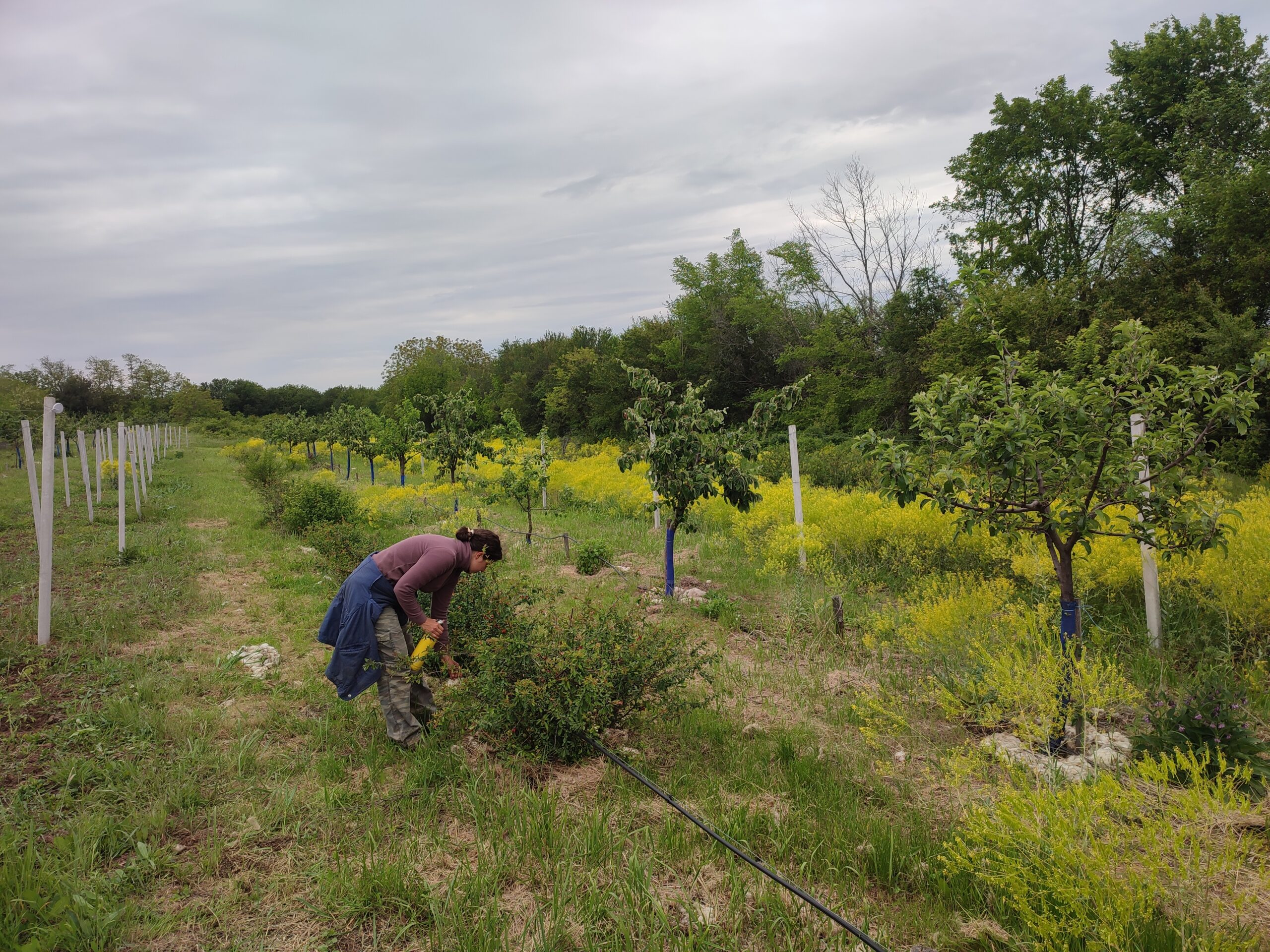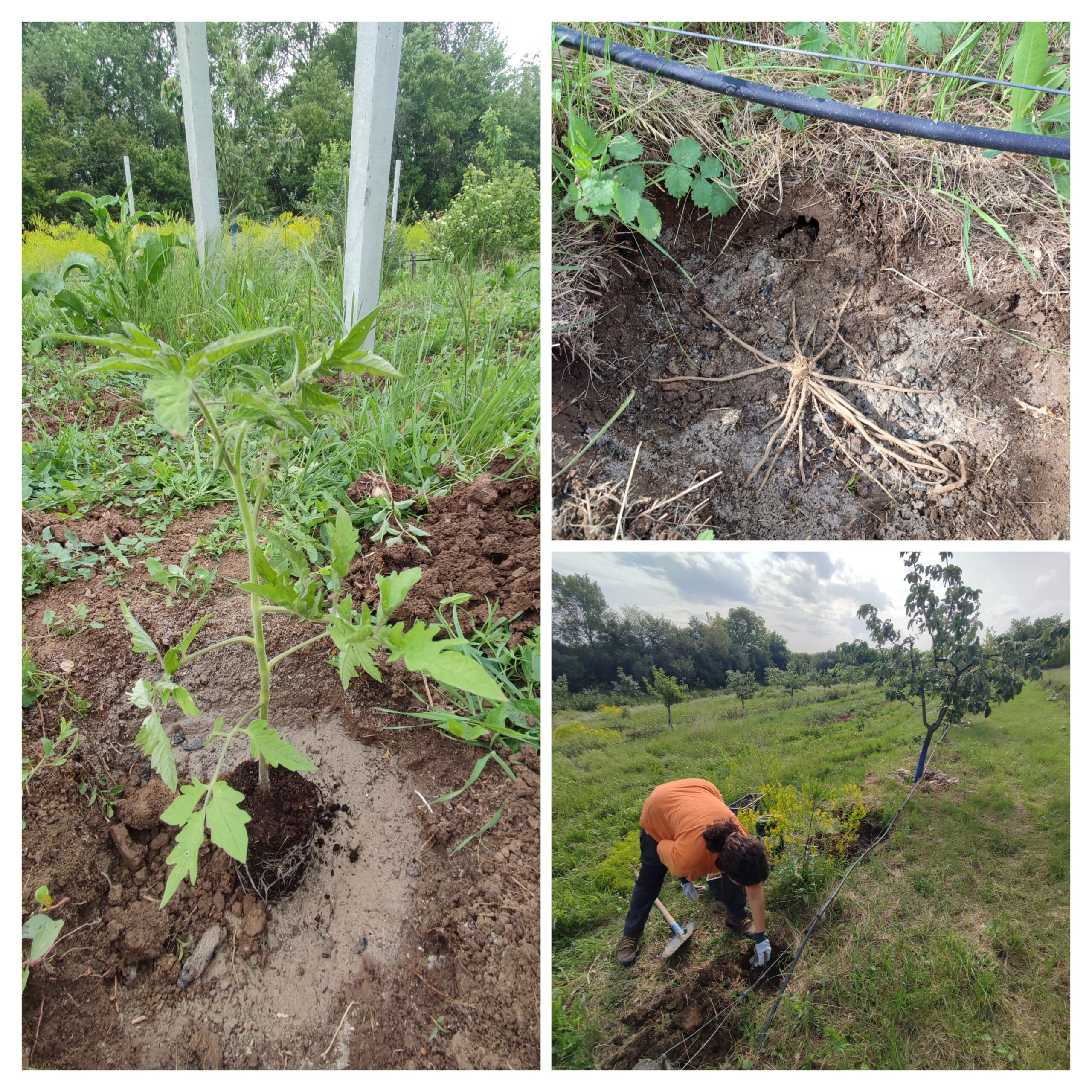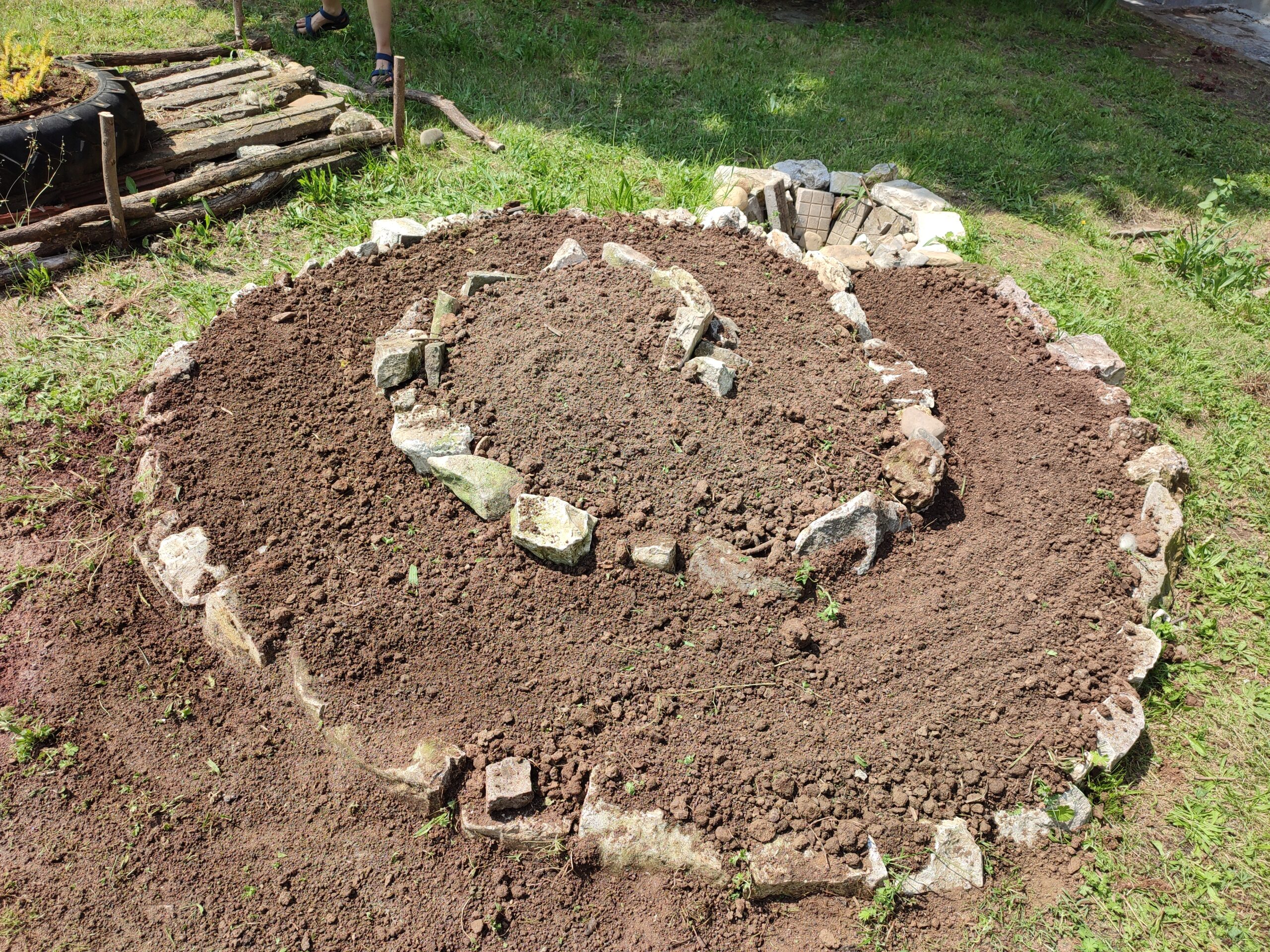Peter and Anastasja:
Hello everyone,
Here are some updates from this week, as we have been continuing some work that we started last week. We planted a lot, and continued working in the Red House garden and Suhidol:
On Monday, we planted some microgreens and peas. With the peas we experimented with a method our host Catherine found on the internet. First, we soaked the peas for an hour or so. Then, we watered the soil a lot, and sowed them very thickly in a small bed. After that, we covered them with plant trays, so they are completely covered and will germinate more quickly. Like this, we will soon be able to harvest many pea-shoots for the veggie-boxes and the Meadows on the Mountain festival. Here is the video which inspired this experiment:
https://www.instagram.com/reel/CoFxWXpjxtL/?igshid=MTc4MmM1YmI2Ng%3D%3D
LEFT: Tomato about to be planted. UP RIGHT: Asparagus about to be planted. DOWN LEFT: Anastasja planting asparagus. (photo credit: Peter Spornberger)
On Tuesday, we planted sixty more tomatoes with the dry farming method we used last week. The tomatoes we planted are looking very well and we are waiting for them to get settled. Then we will mulch them intensively, so the soil can retain more water. What we haven’t mentioned yet, is how we chose where to plant the tomatoes. Thinking in a permaculture way, we chose to plant them in the lowest part of Suhidol, close to a natural water axis, so they can access more ground water once they’ve grown deeper roots. Moreover, in the place where we planted them, our co-workers had already planted some garlic. Garlic is a great companion for tomatoes. It is known for its strong smell which works as a repellant against many insects and pests, such as spider mites which often attack tomatoes, as well as slugs. Garlic is also thought to improve the flavor of tomatoes when grown together, not to mention how well they work together in the kitchen as well. In addition, the garlic will be able to pierce through the thick layer of mulch we will put around the tomatoes.
On Wednesday, we planted some purple asparagus in Suhidol. Asparagus is a perennial, which means that once it has established itself, it will continue to grow roots and make shoots every year. It should not be harvested in the first years, but it is worth the wait, as it will give a bountiful harvest for years to come. You should plant asparagus in areas where the water does not accumulate, so the roots don’t get too wet. We planted the asparagus in between the fruit trees in Suhidol on a slight slope, which is a great position. Then you dig a 20 to 25 cm deep hole (or a trench, if you plant them next to each other, leaving 20 cm of space between the plants). The crown of the aspargus should be around 13 cm deep under the soil, and the roots spread out in a star formation. Moreover, you should give the plant some good soil to start with; some compost and well-rotten manure are best. Cover the plant with the soil you’ve digged out, and then it is time to cross your fingers and wait. Hopefully, next year we’ll get some picture of the asparagus we planted.
The rest of the week we had various tasks. We re-potted more basil, filled the nettle fertilizer tea we made into canisters (1 liter of tea for 10 liters of water), and made some structures for the peas, tomatoes and cucumbers to grow on.
On Friday, we were greated by one sad and one happy surprise.
The sad news first: we uncovered our kombucha and found an even layer of mold growing on both batches we made this week! After that we also tried the kombucha that we bottled last week for second fermentation, and realized that it had not fermented much compared to before. Our conclusion, after a consultation with our supervisor and kombucha-expert Vyara, is that honey might not be an ideal sugar for the booch (or at least, not every SCOBY). We were able to salvage two of the SCOBY mothers, but had to say goodbye to the rest of the batch. We were disappointed, but at least we learned something new and will do better next time.
Now to the good news: we got some soil for our herbal spiral, and were able to fill the spiral as well as two other beds in the community garden. For the upper levels of the spiral we mixed the soil with some sand for the plants that like drier, more draining soil. Next week we will proceed to planting some herbs and flowers in it, so stay tuned!
Herbal spiral filled with soil (photo credit: Peter Spornberger).
Have a great weekend,
Anastasja and Peter




